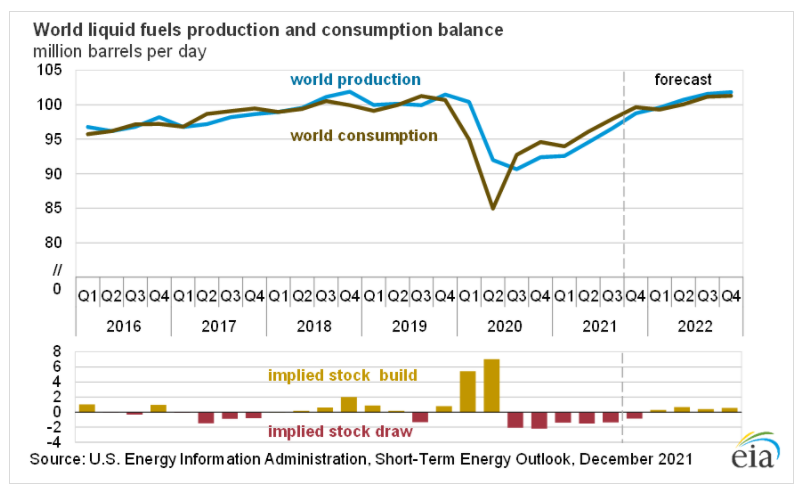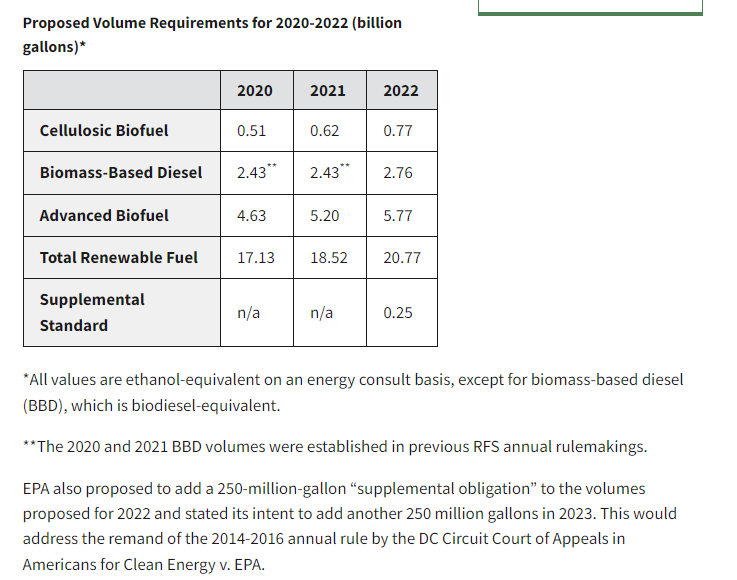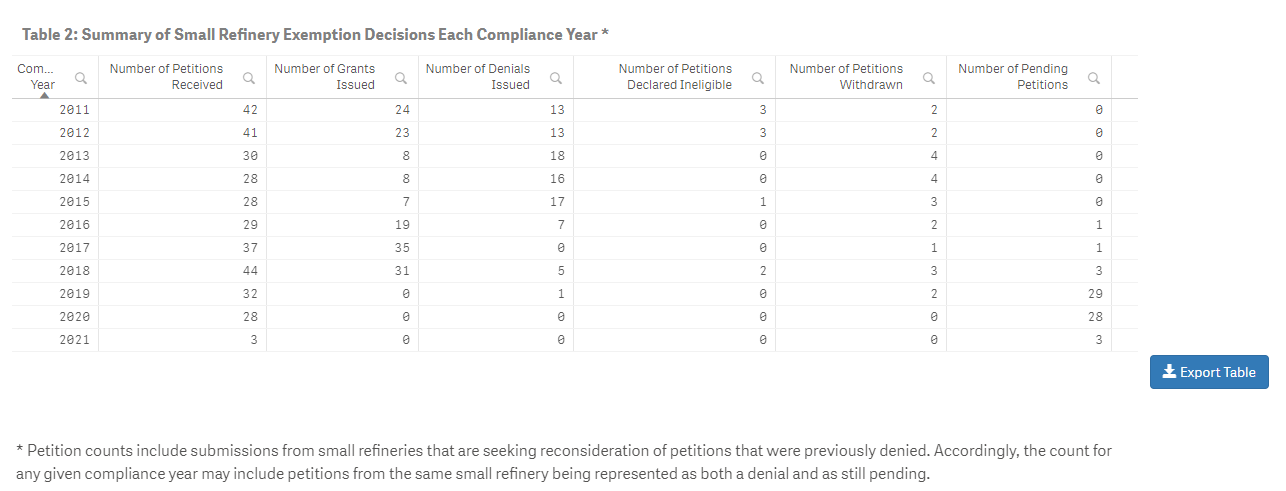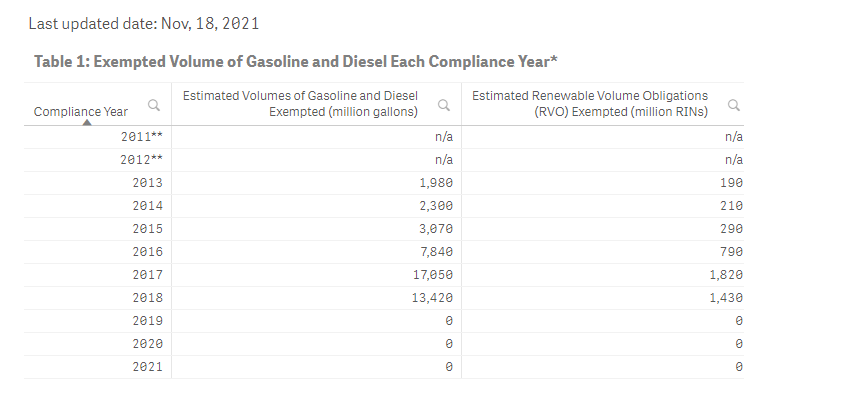US Equity Markets Have Wiped Out Their Black Friday Losses And Energy Futures Are Close Behind

US equity markets have wiped out their black Friday losses, and energy futures are following close behind with both refined products up more than 25 cents off of last week’s lows. While the rally is no doubt impressive, we still need to see RBOB regain the $2.20 mark and ULSD get above $2.30 in order to break the downward sloping trend lines that started 7 weeks ago. If those levels hold as resistance, than this rally looks more like a short term correction rather than a reversal of the downward trend.
Omicron-who? A new Pfizer study suggests that 3 doses of their vaccine is effective against that strain of the virus, adding to the sense of relief that’s washed over markets this week. Whether or not that translates into relaxed travel restrictions may be the deciding factor in the sustainability of this rally.
Amidst the huge rally in stocks, energy futures and chaos in some regional supply markets and environmental credits, the normal fundamental data seems to be taking a backseat. The EIA’s short term energy outlook lowered the agencies demand forecast because of Omicron-induced travel restrictions, and set a price forecast for WTI in the low $60s for next year. That report was basically ignored during yesterday’s big rally, and may already be considered obsolete given the optimism for the vaccines’ effectiveness. The API’s weekly report was also largely shrugged off as inventory builds for gasoline and diesel did little to slow the upward momentum, while WTI prices stalled out overnight even though US crude inventories declined. The DOE’s weekly report is due out at 9:30 central, and we’ll just wait and see if anyone pays attention to it.
It was a wild day in RIN markets as the long overdue RFS proposals from the EPA finally were released, just a year (or two) later than the law says they should be. D6 RINs traded down 15 cents on the day to a 1 year low of $.75/RIN when the rumored numbers came out in the morning, then rallied 30 cents to end the day up 15 cents at $1.05 after the actual Renewable Volume Obligation (RVO) recommendation was released by the EPA. The actual proposed numbers came in very close to the leaked numbers from back in September, which retroactively changed the 2020 blending mandate lower and reduced the 2021 volumes as well.
Why the big rally then? Along with the proposed volumes, the EPA also proposed to deny more than 60 pending small refinery exemptions (SRE) from the RFS, which according to the table below suggests every single SRE submitted since 2019 is going to be denied, a stark contract to the previous 3 years when most were granted. So what? That means even though the RVO target has been lowered, the actual volumes needing to be blended may still go up. In addition, the EPA raised the 2022 blending obligation, and set the stage for further increases in 2023 and beyond.
It’s worth noting, particularly given the large amount of fake news surrounding this topic, that neither the RVO or SRE proposals are final yet, and there will no doubt be lawsuits challenging both decisions, meaning the industry will continue operating without knowing exactly what the law really is.
The Natural Gas war: After a phone call between the US & Russian Presidents Tuesday, US Officials signaled a plan to force a shutdown of the Nordstream 2 natural gas line that exports Russian natural gas to Europe if there’s an invasion of the Ukraine. There’s no doubt the Russians know how to play a game of chess, so it will be interesting – if not terrifying for those relying on that supply – to see their response. This event may end up being one for the history books, whether or not the US Excess natural gas supply can help secure Europe’s shortage, or will they continue to prove reliant on an unfriendly neighbor to the East. Hopefully that’s the only part of this story that ends up in the history books.
Click here to download a PDF of today's TACenergy Market Talk.
Latest Posts
The Sell-Off Continues In Energy Markets, RBOB Gasoline Futures Are Now Down Nearly 13 Cents In The Past Two Days
Week 15 - US DOE Inventory Recap
Prices To Lease Space On Colonial’s Main Gasoline Line Continue To Rally This Week
Equity Markets Have Been Pulling Back Sharply In Recent Days As Inflation And Trade Concerns Inject A Sense Of Reality Into Stocks
Social Media
News & Views
View All
The Sell-Off Continues In Energy Markets, RBOB Gasoline Futures Are Now Down Nearly 13 Cents In The Past Two Days
The sell-off continues in energy markets. RBOB gasoline futures are now down nearly 13 cents in the past two days, and have fallen 16 cents from a week ago, leading to questions about whether or not we’ve seen the seasonal peak in gasoline prices. ULSD futures are also coming under heavy selling pressure, dropping 15 cents so far this week and are trading at their lowest level since January 3rd.
The drop on the weekly chart certainly takes away the upside momentum for gasoline that still favored a run at the $3 mark just a few days ago, but the longer term up-trend that helped propel a 90-cent increase since mid-December is still intact as long as prices stay above the $2.60 mark for the next week. If diesel prices break below $2.50 there’s a strong possibility that we see another 30 cent price drop in the next couple of weeks.
An unwind of long positions after Iran’s attack on Israel was swatted out of the sky without further escalation (so far anyway) and reports that Russia is resuming refinery runs, both seeming to be contributing factors to the sharp pullback in prices.
Along with the uncertainty about where the next attacks may or may not occur, and if they will have any meaningful impact on supply, come no shortage of rumors about potential SPR releases or how OPEC might respond to the crisis. The only thing that’s certain at this point, is that there’s much more spare capacity for both oil production and refining now than there was 2 years ago, which seems to be helping keep a lid on prices despite so much tension.
In addition, for those that remember the chaos in oil markets 50 years ago sparked by similar events in and around Israel, read this note from the NY Times on why things are different this time around.
The DOE’s weekly status report was largely ignored in the midst of the big sell-off Wednesday, with few noteworthy items in the report.
Diesel demand did see a strong recovery from last week’s throwaway figure that proves the vulnerability of the weekly estimates, particularly the week after a holiday, but that did nothing to slow the sell-off in ULSD futures.
Perhaps the biggest next of the week was that the agency made its seasonal changes to nameplate refining capacity as facilities emerged from their spring maintenance.
PADD 2 saw an increase of 36mb/day, and PADD 3 increased by 72mb/day, both of which set new records for regional capacity. PADD 5 meanwhile continued its slow-motion decline, losing another 30mb/day of capacity as California’s war of attrition against the industry continues. It’s worth noting that given the glacial pace of EIA reporting on the topic, we’re unlikely to see the impact of Rodeo’s conversion in the official numbers until next year.
Speaking of which, if you believe the PADD 5 diesel chart below that suggests the region is running out of the fuel, when in fact there’s an excess in most local markets, you haven’t been paying attention. Gasoline inventories on the West Coast however do appear consistent with reality as less refining output and a lack of resupply options both continue to create headaches for suppliers.

Week 15 - US DOE Inventory Recap

Prices To Lease Space On Colonial’s Main Gasoline Line Continue To Rally This Week
Energy markets are sliding lower again to start Wednesday’s trading as demand concerns and weaker stock markets around the world seem to be outweighing any supply concerns for the time being.
Rumors continue to swirl about an “imminent” response by Israel to Iran’s attacks, but so far, no news seems to be taken as good news in the hopes that further escalation can be avoided, even as tensions near the Red Sea and Strait of Hormuz continue to simmer.
Prices to lease space on Colonial’s main gasoline line continue to rally this week, trading north of 11 cents/gallon as Gulf Coast producers still struggle to find outlets for their production, despite a healthy export market. Gulf Coast CBOB is trading at discounts of around 34 cents to futures, while Gulf Coast RBOB is trading around a 16-cent discount, which gives shippers room to pay up for the linespace and still deliver into the East Coast markets at a profit.
Back to reality, or just the start of more volatility? California CARBOB basis values have dropped back to “only” 40 cent premiums to RBOB futures this week, as multiple flaring events at California refineries don’t appear to have impacted supply. The state has been an island for fuel supplies for many years as its boutique grades prevent imports from neighboring states, and now add the conversion of the P66 Rodeo refinery to renewable diesel production and the pending changes to try and cap refinery profits, and it’s easier to understand why these markets are increasingly vulnerable to supply shocks and price spikes on gasoline.
RIN prices continue to fall this week, touching 44 cents/RIN for D4 and D6 values Tuesday, their lowest level in 6 weeks and just about a nickel above a 4-year low. While the sharp drop in RIN and LCFS values has caused several biodiesel and Renewable Diesel producers to either shut down or limit production, the growth in RIN generation continues thanks to projects like the Rodeo refinery conversion, making the supply in RINs still outpace the demand set by the Renewable Fuel Standard by a wide margin.
The API reported draws in refined products, 2.5 million barrels for gasoline and 427,000 barrels for distillates, while crude oil stocks had an estimated build of more than 4 million barrels. The DOE’s weekly report is due out at its normal time this morning.
Click here to download a PDF of today's TACenergy Market Talk.






